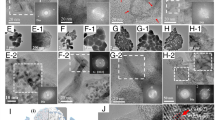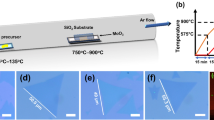Abstract
Chemical Vapor Deposited (CVD) diamond growth on (111)-diamond surfaces has received increased attention lately because of the use of N-V related centers in quantum computing as well as application of these defect centers in sensing nano-Tesla strength magnetic fields. We have carried out a detailed study of homoepitaxial diamond deposition on (111)-single crystal diamond (SCD) surfaces using a 1.2 kW microwave plasma CVD (MPCVD) system employing methane/hydrogen/nitrogen/oxygen gas phase chemistry. We have utilized Type Ib (111)-oriented single crystal diamonds as seed crystals in our study. The homoepitaxially grown diamond films were analyzed by Raman spectroscopy, Photoluminescence Spectroscopy (PL), X-ray Photoelectron Spectroscopy (XPS), Scanning Electron Microscopy (SEM) and Atomic Force Microscopy (AFM). The nitrogen concentration in the plasma was carefully varied between 0 and 1500 ppm while a ppm level of silicon impurity is present in the plasma from the quartz bell jar. The concentration of N-V defect centers with PL zero phonon lines (ZPL) at 575nm and 637nm and the Si-defect center with a ZPL at 737nm were experimentally detected from a variation in CVD growth conditions and were quantitatively studied. Altering nitrogen and oxygen concentration in the plasma was observed to directly affect N-V and Si-defect incorporation into the (111)-oriented diamond lattice and these findings are presented.
Similar content being viewed by others
References
Chih-shiue Yan, {etet al.} ‘Very High Growth Rate Chemical Vapor Deposition of Single-Crystal Diamond’, Proceedings of the National Academy of Sciences, 99 (2002), 12523–25.
A. Tallaire, {etet al.} ‘High Quality Thick CVD Diamond Films Homoepitaxially Grown on (111)-Oriented Substrates’, Diamond and Related Materials, 41 (2014), 34–40.
J. Michl, {etet al.} ‘Perfect Alignment and Preferential Orientation of Nitrogen-Vacancy Centers During Chemical Vapor Deposition Diamond Growth on (111) Surfaces’, Applied Physics Letters, 104 (2014).
T. G. McCauley. ‘Synthesis and Characterization of Metastable Phases of Carbon’ (University of Alabama Birmingham, 1996).
Christopher M. Breeding, {etet al.} ‘The "Type" Classification System of Diamonds and Its Importance in Gemology’, Gems & Gemology, 45 (2009), 96–111.
M. W. Doherty, {etet al.} ‘The Nitrogen-Vacancy Color Centre in Diamond’, Physics Reports, 528 (2013), 1–45.
Sungkun Hong, {etet al.} ‘Nanoscale Magnetometry with NV Centers in Diamond’, MRS Bulletin, 38 (2013), 155–61.
Acknowledgments
We acknowledge support from the Department of Energy - Carnegie DOE Alliance Center (CDAC) under Grant No. DE-NA002006
Author information
Authors and Affiliations
Rights and permissions
About this article
Cite this article
Moore, S.L., Vohra, Y.K. Nitrogen and Silicon Defect Incorporation during Homoepitaxial CVD Diamond Growth on (111) Surfaces. MRS Online Proceedings Library 1734, 26–31 (2014). https://doi.org/10.1557/opl.2015.304
Published:
Issue Date:
DOI: https://doi.org/10.1557/opl.2015.304




